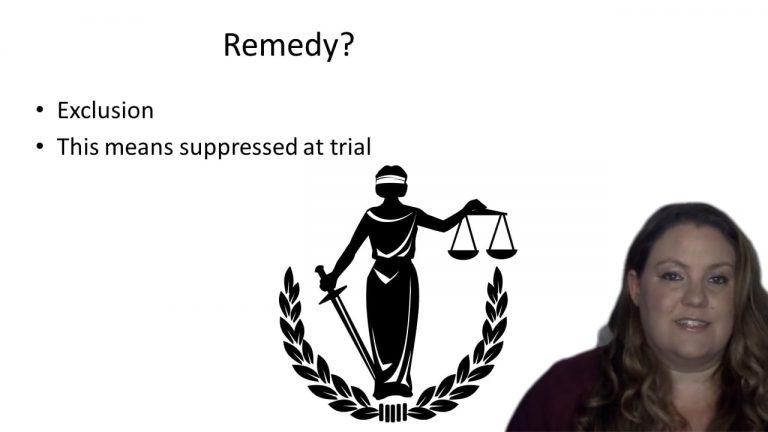SmartBrief
Confirm favorite deletion?
Criminal Procedure Keyed to Dressler
Murray v. United States
Citation:
487 U.S. 533, 108 S.Ct. 2529, 101 L.Ed.2d 472.Facts
Federal law enforcement agents had been surveilling the defendant and several of his co-conspirators. They observed the defendant drive a truck into a warehouse and his co-conspirator drive a camper into the warehouse. The vehicles were later lawfully seized and both vehicles were found to contain marijuana.
After receiving this information, several of the agents forced entry into the warehouse. They found the warehouse unoccupied, but observed in plain view numerous burlap-wrapped bales that were later found to contain marijuana. They left without disturbing the bales, kept the warehouse under surveillance, and did not reenter it until they had a search warrant. In applying for the warrant, the agents did not mention the prior entry, and did not rely on any observations made during that entry. When the warrant was issued, the agents immediately reentered the warehouse and seized 270 bales of marijuana and notebooks listing customers for whom the bales were destined.
Before trial, the defendant moved to suppress the evidence found in the warehouse, arguing that the warrant was invalid because the agents did not inform the judge about their prior warrantless entry, and that the warrant was tainted by that entry. The District Court denied the motion, and the First Circuit affirmed.
Only StudyBuddy Pro offers the complete Case Brief Anatomy*
Access the most important case brief elements for optimal case understanding.
*Case Brief Anatomy includes: Brief Prologue, Complete Case Brief, Brief Epilogue
- The Brief Prologue provides necessary case brief introductory information and includes:
Topic:
Identifies the topic of law and where this case fits within your course outline.Parties:
Identifies the cast of characters involved in the case.Procedural Posture & History:
Shares the case history with how lower courts have ruled on the matter.Case Key Terms, Acts, Doctrines, etc.:
A case specific Legal Term Dictionary.Case Doctrines, Acts, Statutes, Amendments and Treatises:
Identifies and Defines Legal Authority used in this case.
- The Case Brief is the complete case summarized and authored in the traditional Law School I.R.A.C. format. The Pro case brief includes:
Brief Facts:
A Synopsis of the Facts of the case.Rule of Law:
Identifies the Legal Principle the Court used in deciding the case.Facts:
What are the factual circumstances that gave rise to the civil or criminal case? What is the relationship of the Parties that are involved in the case.Issue(s):
Lists the Questions of Law that are raised by the Facts of the case.Holding:
Shares the Court's answer to the legal questions raised in the issue.Concurring / Dissenting Opinions:
Includes valuable concurring or dissenting opinions and their key points.Reasoning and Analysis:
Identifies the chain of argument(s) which led the judges to rule as they did.
- The Brief Prologue closes the case brief with important forward-looking discussion and includes:
Policy:
Identifies the Policy if any that has been established by the case.Court Direction:
Shares where the Court went from here for this case.
Topic Resources
Topic Outline
Topic Refresher Course
Topic Charts & Notes

 15m 53s
15m 53s